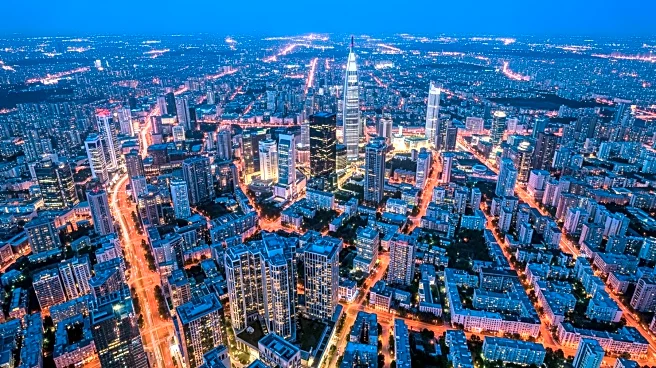What's Happening?
A United Nations report has found that 81% of the world's population now resides in urban areas, a significant increase from previous estimates. The report, which analyzed satellite and national survey
data from 237 countries, defined urban areas as cities with at least 50,000 people or towns with at least 5,000 inhabitants. This new definition provides a clearer picture of global urbanization, revealing that 45% of people live in cities and 36% in towns. The report predicts that by 2050, 83% of the global population will live in urban regions, driven by factors such as migration and population growth.
Why It's Important?
The rapid urbanization highlighted in the UN report underscores the need for sustainable urban planning and development. As more people move to cities, there is increased pressure on infrastructure, housing, and public services. Urban areas must adapt to accommodate growing populations while minimizing environmental impact. The report's findings will inform policies aimed at achieving sustainable development goals, including making cities inclusive, safe, resilient, and sustainable. Additionally, urbanization presents both challenges and opportunities for economic growth, social connectivity, and healthcare access.
What's Next?
The report's insights will guide future urban planning and policy decisions, emphasizing the importance of sustainable development in urban areas. Governments and city planners will need to address issues such as transportation, housing, and environmental sustainability to accommodate growing urban populations. The findings will also contribute to global efforts to combat climate change, as urban areas play a crucial role in reducing carbon emissions and promoting energy efficiency. Collaboration between international organizations, governments, and local communities will be essential in implementing effective urban strategies.












